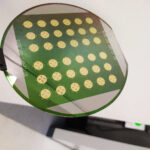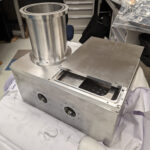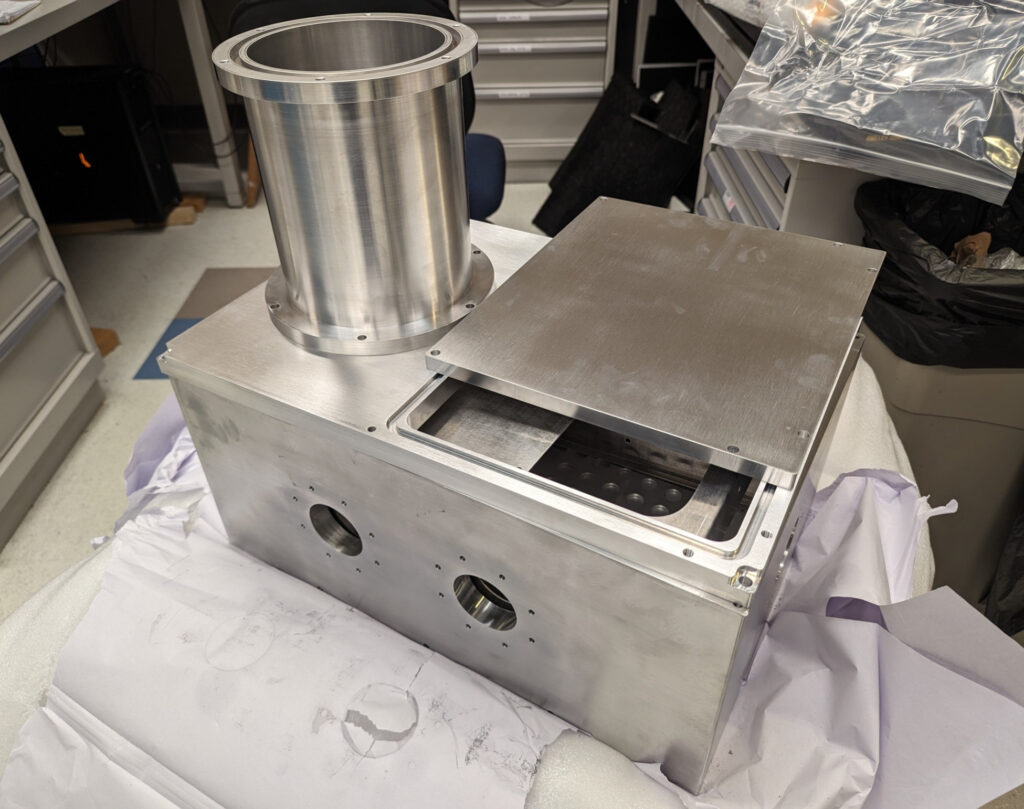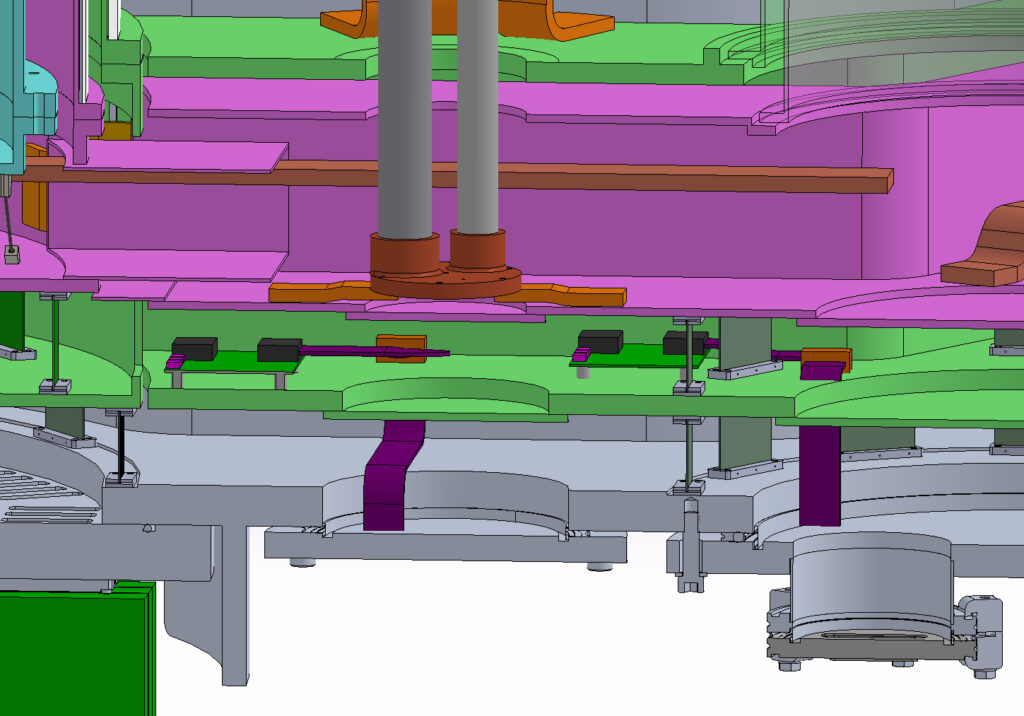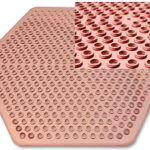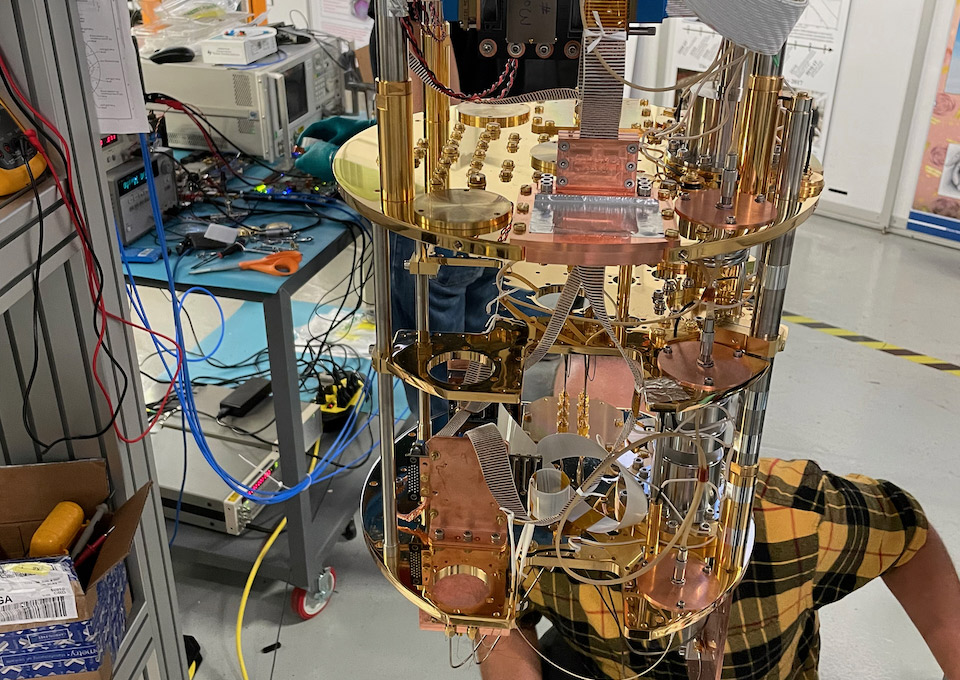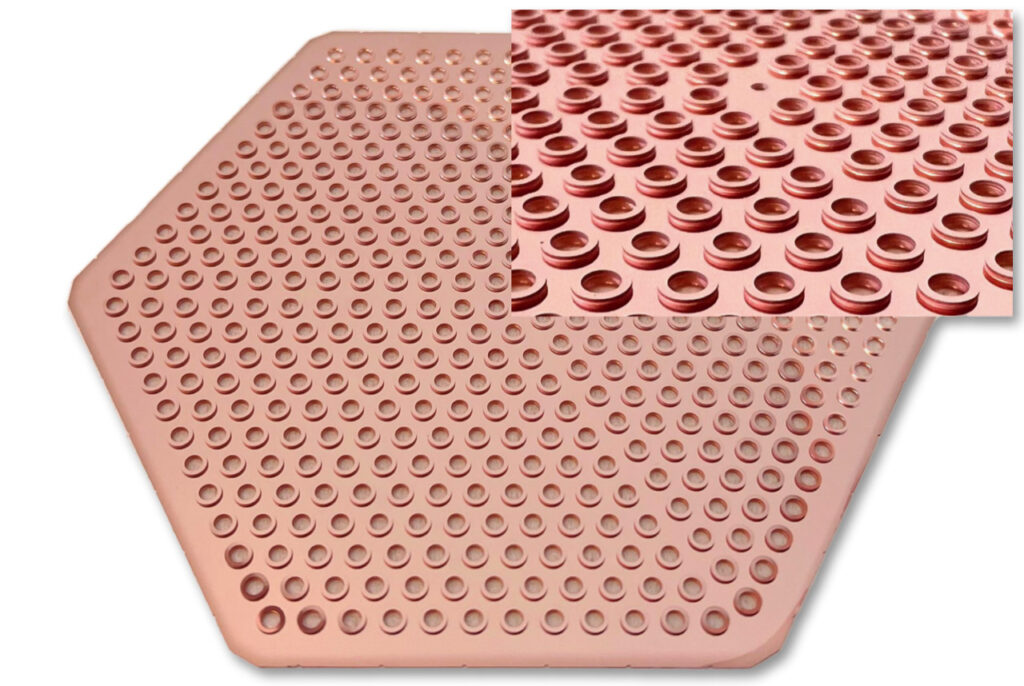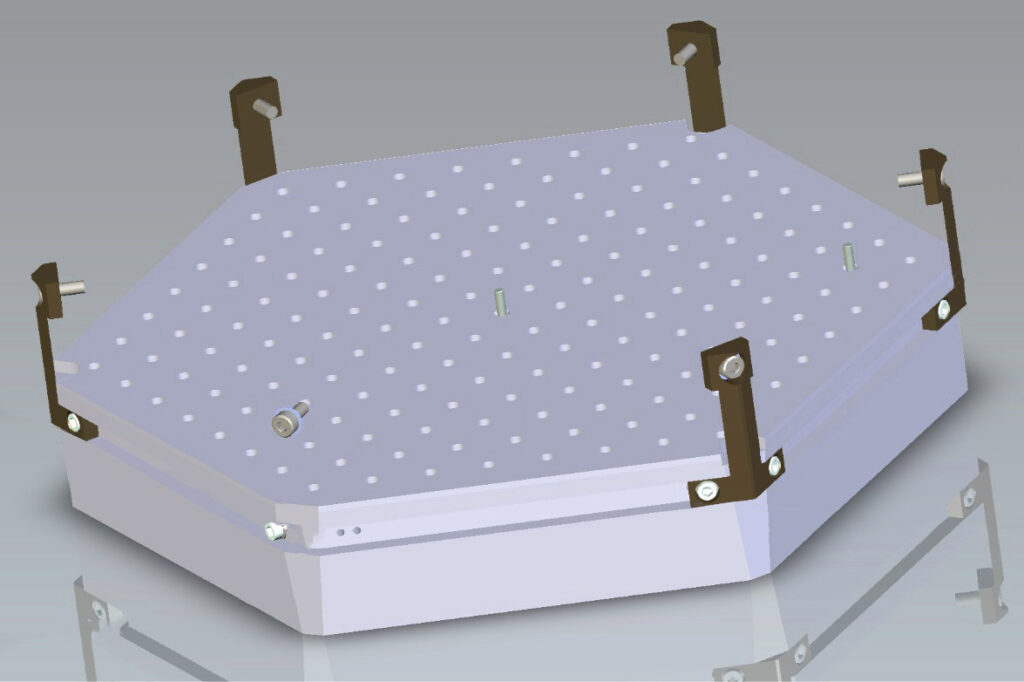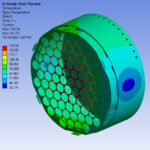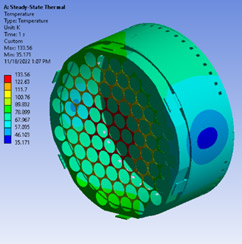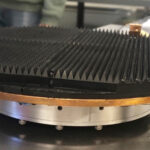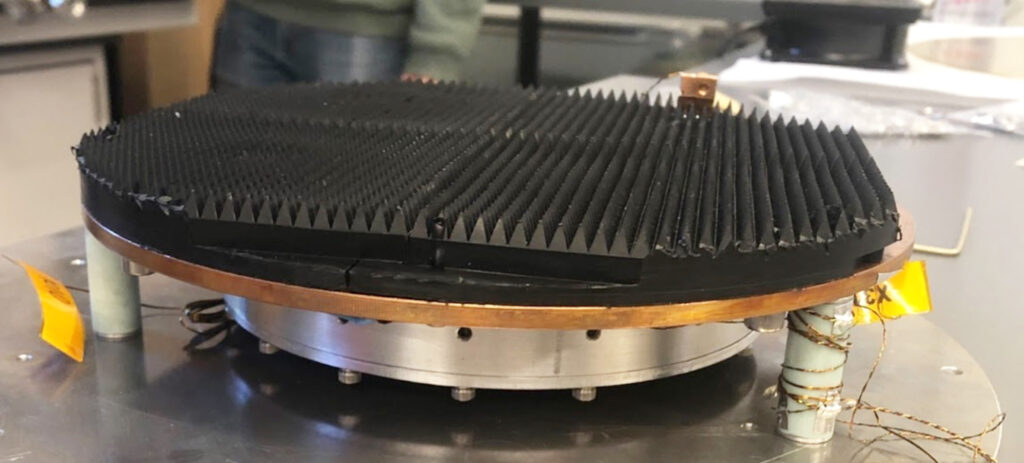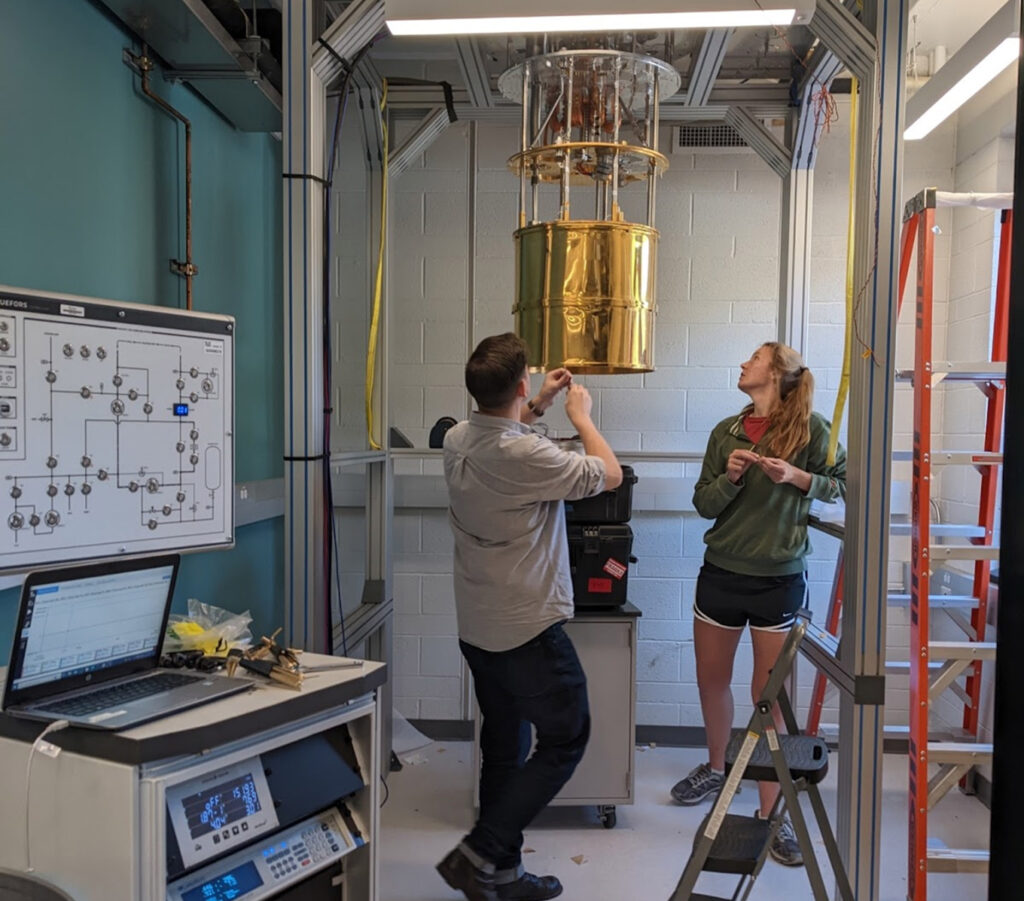Fabrication of CMB-S4 prototype detector wafers is a key development goal for the project. The February newsletter highlighted the successful delivery of a first CMB-S4 prototype wafer produced by SEEQC/LBNL. This month we want to highlight ongoing work in our other wafer fabrication sites: NIST, JPL, UC Berkeley, and ANL.
NIST is currently focused on building several single pixel test structures to validate detector design features. This modular approach enables precise optimization of fabrication conditions for the final wafer design. The completed test structures, see Fig. 1 (below: Microscope photo of a recently completed LAT mid-frequency prototype detector pixel at NIST. The superconducting circuit elements are clearly visible.) for a LAT mid-frequency pixel, are wirebonded to a circuit board that integrates into a cryostat for rapid testing at cryogenic temperatures.
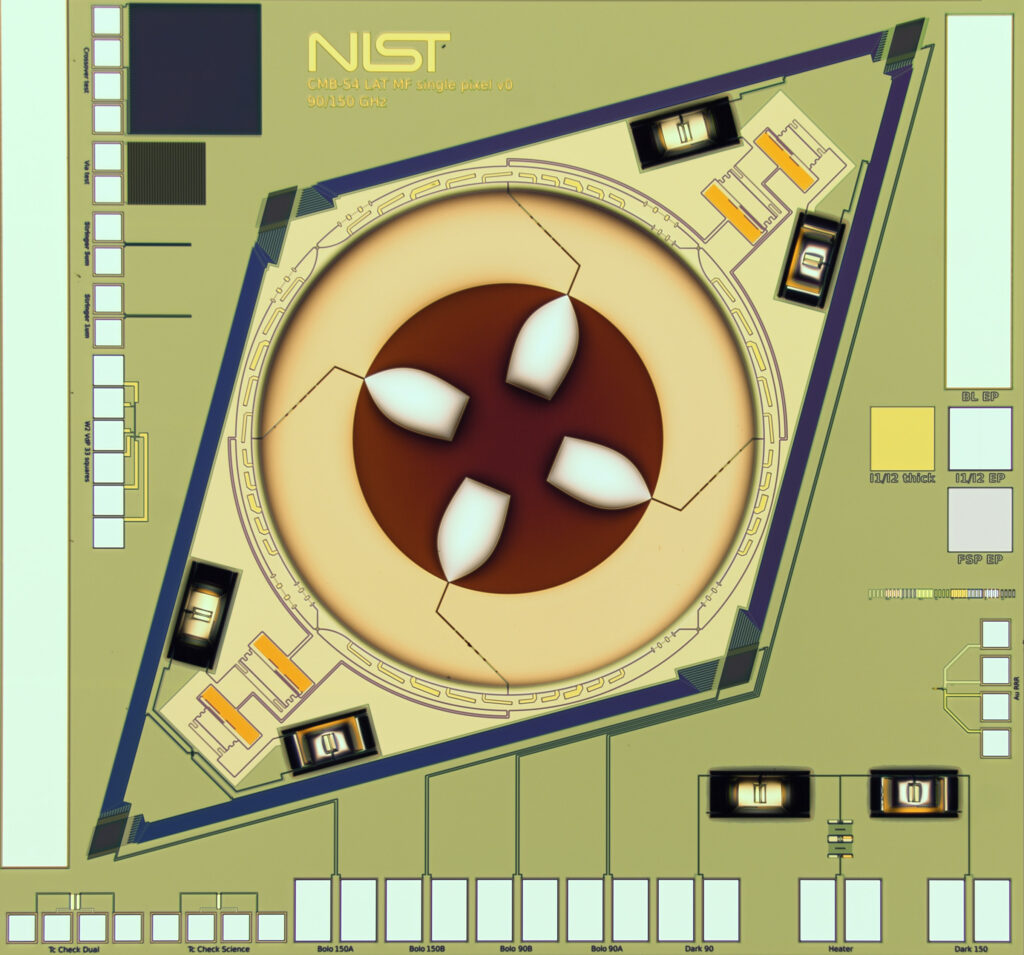
JPL completed the layout and mask design of a SAT mid-frequency single pixel, see Fig. 2, and a corresponding prototype wafer. JPL is making significant progress with validating their proposed fabrication steps by building and measuring properties of subcomponent structures. Parallel work has focused on optimizing the final, full wafer design to adapt to the fabrication capabilities at JPL.Fig. 2, below, is JPL’s recent design for the SAT mid-frequency detector pixel.
![]()
UC Berkeley’s development is focused on building low frequency detector wafers, which require large-diameter and free-standing nitride membranes to support the long-wave-length optimized OMT probes. Fig. 3, below, shows a test wafer successfully incorporating these fragile structures which is their most recent achievement. Support of the OMTs (Orthomode Transducers) – paddles coupling the CMB radiation to the detector RF circuits – requires large-diameter, free-standing, low-stress nitride membranes to hold the long-wave-length optimized OMT probes in place. UC Berkeley (with SEEQC support) has recently demonstrated this critical fabrication step.
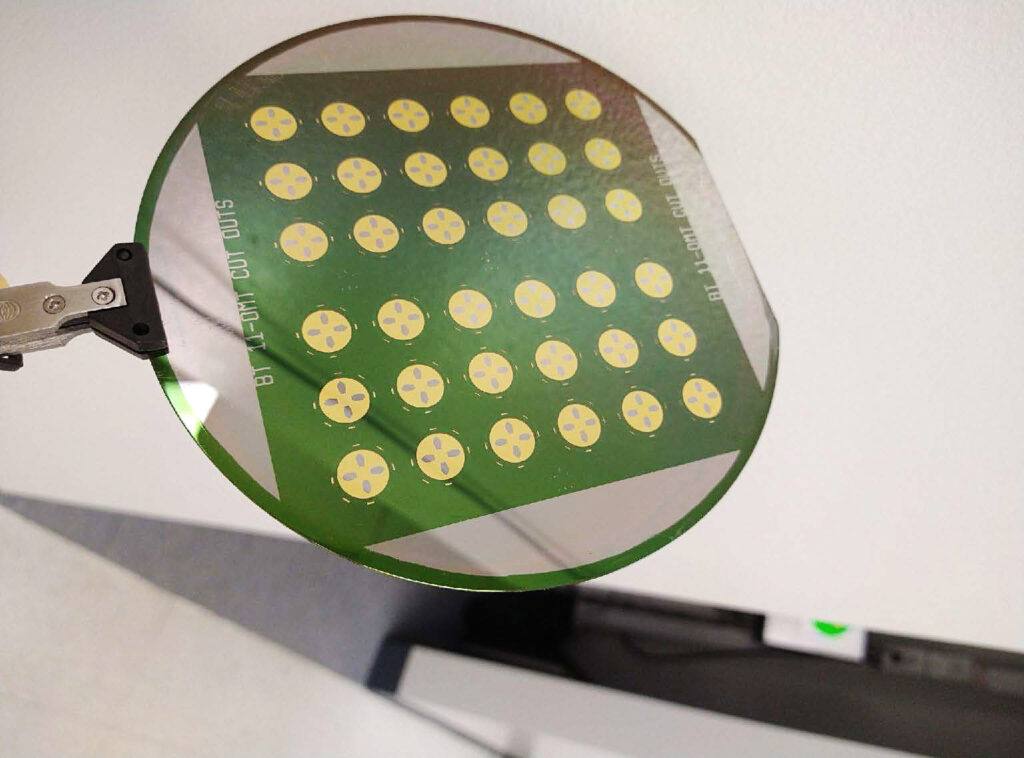
ANL concentrates effort on the development of the LAT mid-frequency wafers. Recent work has been focused on evaluating material properties using single pixel structures as shown in Fig. 4, below. ANL has validated material properties by carrying out systematic mm-wave loss studies of microstrip lines. The image shows a test setup with MKIDs and the microstrip line extending beyond the bottom of the photo. In addition, ANL is developing an optical test setup for rapid, cryogenic testing of single-pixel structures – similar to what has been developed at NIST.
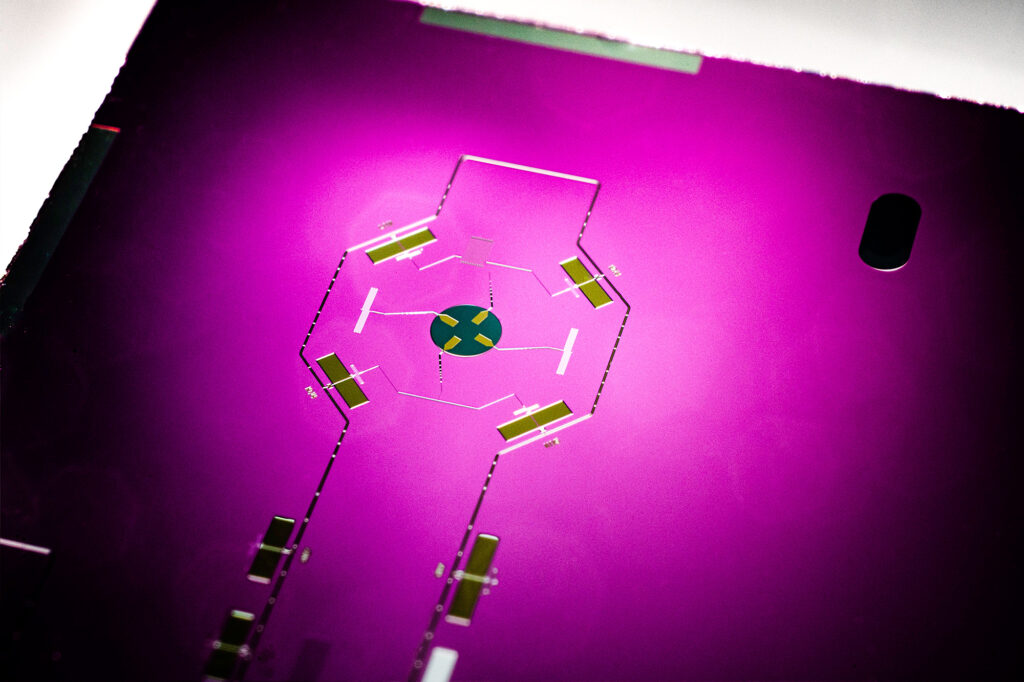
Key Dates and Upcoming Activities
Thanks for an exciting Spring Collaboration Meeting! The meeting focused on CMB-S4’s project baseline development after the recent conclusion of the Analysis of Alternatives. We heard about significant advancements developing the new project baseline (covering scientific, technical, simulation, and project management areas). The next Collaboration Meeting will be held in person at SLAC this summer – more details to follow.
- CMB-S4 Summer Collaboration Meeting – week of July 31 – Aug 4, 2023
Originally posted in the CMB-S4 April 2023 Newsletter
